The excavations of St. James Gardens, in preparation for the expansion of Euston Station for HS2, have been underway for some time and make the headlines every few months when a significant discovery is made. The last time was a few weeks ago when the grave of Matthew Flinders was found. Flinders was the first European to circumnavigate Australia. He died in 1814 and his headstone was removed from St. James Gardens during previous clearances and expansion of the station. His grave was assumed to have been lost, but was identified during the current excavations by the use of a lead plate on his coffin.
One year ago, in February 2018 I took a walk around the streets to the west of Euston Station to look at the streets that would be under the HS2 Platforms and Concourse. This followed on from an earlier post on St. James Gardens.
I thought that it would be interesting to take another walk around the same area, almost exactly one year later and get a 2019 update on the changes that have taken place.
Most of the roads have now been closed to traffic, although there is still pedestrian access along some of the roads immediately to the west of Euston Station. There has been very little demolition yet, just lots of scaffolding and hoardings. The main focus of work appears to be at the location of St. James Gardens.
The following map provides an overview of the area and I have marked the locations of the photos that appear in the post.
Map © OpenStreetMap contributors.
Euston Station is the large area in the upper right part of the map. The current HS2 expansion of Euston is roughly covering the area bounded by where I was taking photos, although the final area will be larger and there is already work commencing between the station and Euston Road.
The first few photos are from location one. Leaving Euston Station, this is the view towards Euston Street.
It is possible to walk north a short distance to the point where Cardington Street began. This is the street that ran to the east of St. James Gardens.
The following view is looking up Cardington Street. The iBis Hotel was on the left of the street. The large white marquee is covering the excavations of the graveyard at St. James Gardens. The size of the marquee provides some idea of the scale of work involved.
On the corner of Melton Street and Drummond Street is the original Euston station of the Charing Cross, Euston and Hampstead Railway. The station is one of Leslie Green’s distinctive station designs.
Looking back along Melton Street towards Euston Road.
Although closed for traffic, this part of Drummond Street is still open for pedestrians, so I walked down and turned right into Coburg Street. This section is still open for traffic and the Exmouth Arms is open (see location two). The large marquee over the St. James Gardens excavations can be seen in the background.
Looking back down Drummond Street from location three in the map.
The other side of Coburg Street is open, but the buildings alongside are hoarded off, presumably waiting for demolition.
The following photos are from location four. At the junction of Coburg Street and Euston Street, yet more buildings covered in scaffolding.
The Bree Louise pub is still there, but fenced off.
Back to the junction with Drummond Street and this is the view along the northern leg of Coburg Street. The old iBis Hotel is underneath the sheeting on the right.
I then walked up to Hampstead Road to see what impact HS2 preparation is having. Most of the buildings along a significant section of the east side of Hampstead Road have been demolished, including the old London Temperance Hospital. This is the view (location five) of the rear of the marquee covering the St. James Garden’s excavations.
HS2 have built a small community space along Hampstead Road (location six).
On display in the space are the foundation stones recovered from the London Temperance Hospital.
The first foundation stone, with above, a decorative lintel retrieved from the main building.
An information note advises that time capsules were retrieved from underneath the foundation stones and that these are currently being conserved. Unfortunately there is no information on what was in the time capsules.
There is also a memorial stone recovered from St. James Gardens. This is a Ledger Stone for the Griffiths family, made of Welsh slate possibly to reflect their Welsh heritage.
The second foundation stone from the London Temperance Hospital.
There are a number of large information panels which tell the history of the area and the impact the expansion of the railways.
The railways have had a significant impact on the area, HS2 is just the latest expansion. 19th century expansion of Euston Station had already taken a section of St. James Gardens and the construction of the tracks into the station had a major impact on the graveyard of St. Pancras Old Church.
Information panels showing the history of the wider area.
This was the northern end of Cardington Street which is closed a short distance along (location seven in the map above). I suspect many satnavs have not been updated as in the short time I was there, a number of cars turned into the street and had to turn round.
View along Hampstead Road to the south. The area to the left of the photo will look very different when HS2 is complete.
In the year since I last visited the site, the main focus of work appears to be at the old graveyard at St. James Gardens which is not surprising given the considerable amount of archaeological excavation and investigation that is needed.
It is still possible to walk many of the streets, although for how much longer is not clear, the majority of buildings lining these streets appear to be ready for demolition.
It will be interesting to make a return visit in February 2020 to see how far work has progressed. What is clear is the scale of the impact that HS2 will have on Euston. This will be a very different station when the new service is operational.


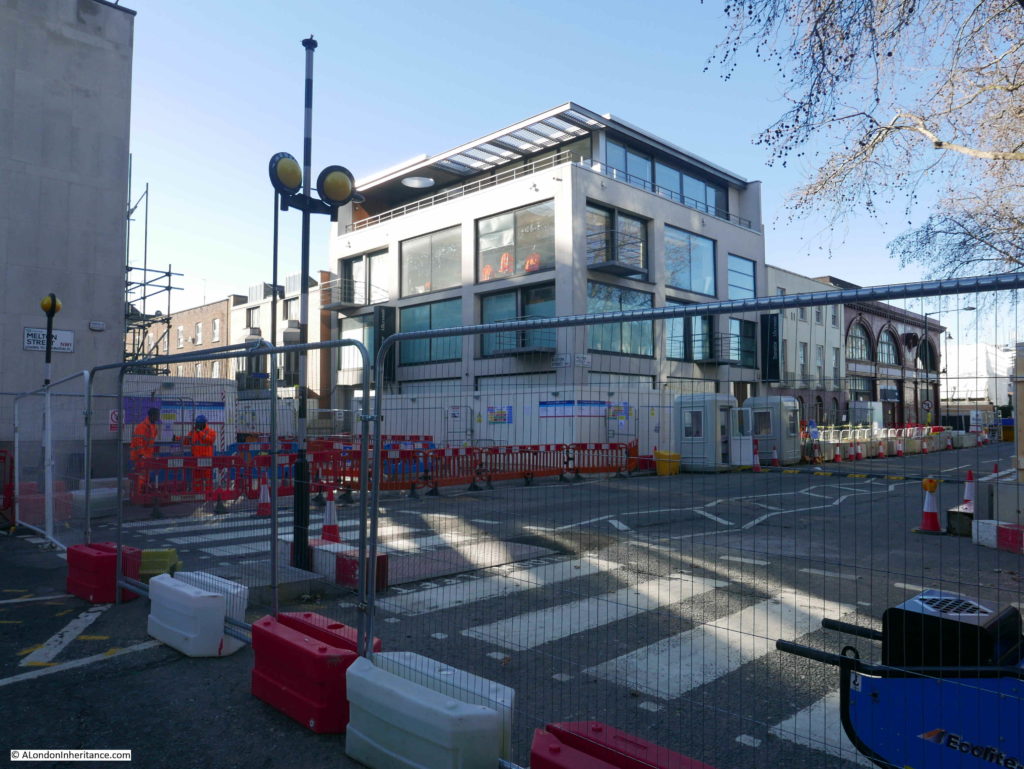

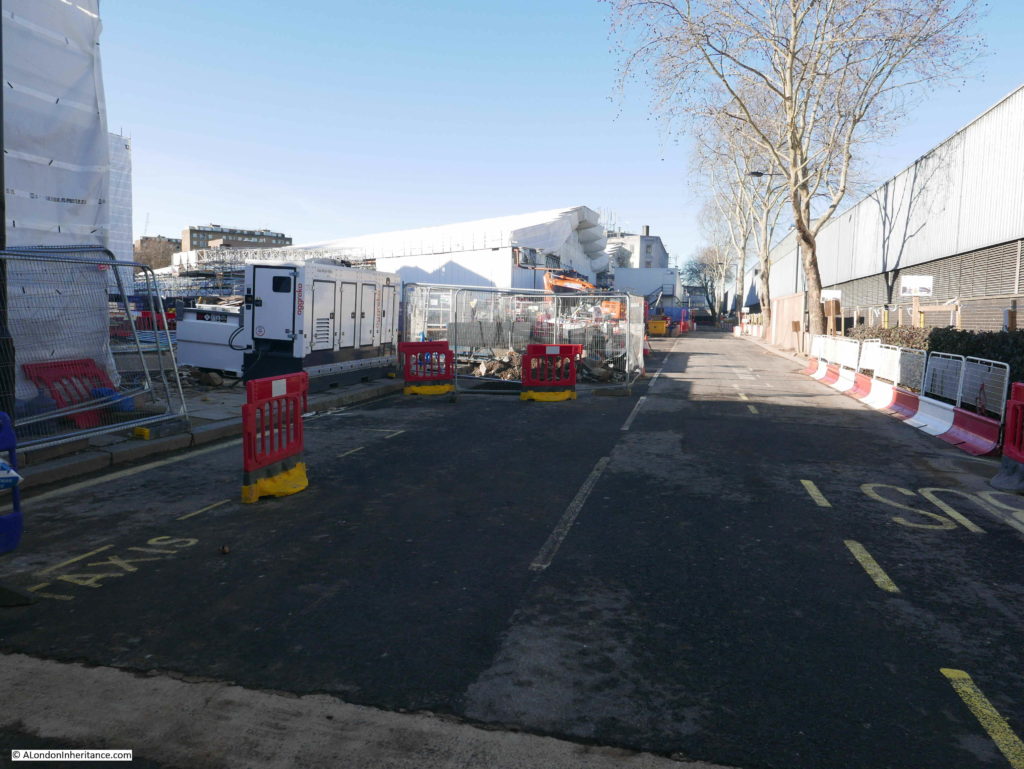
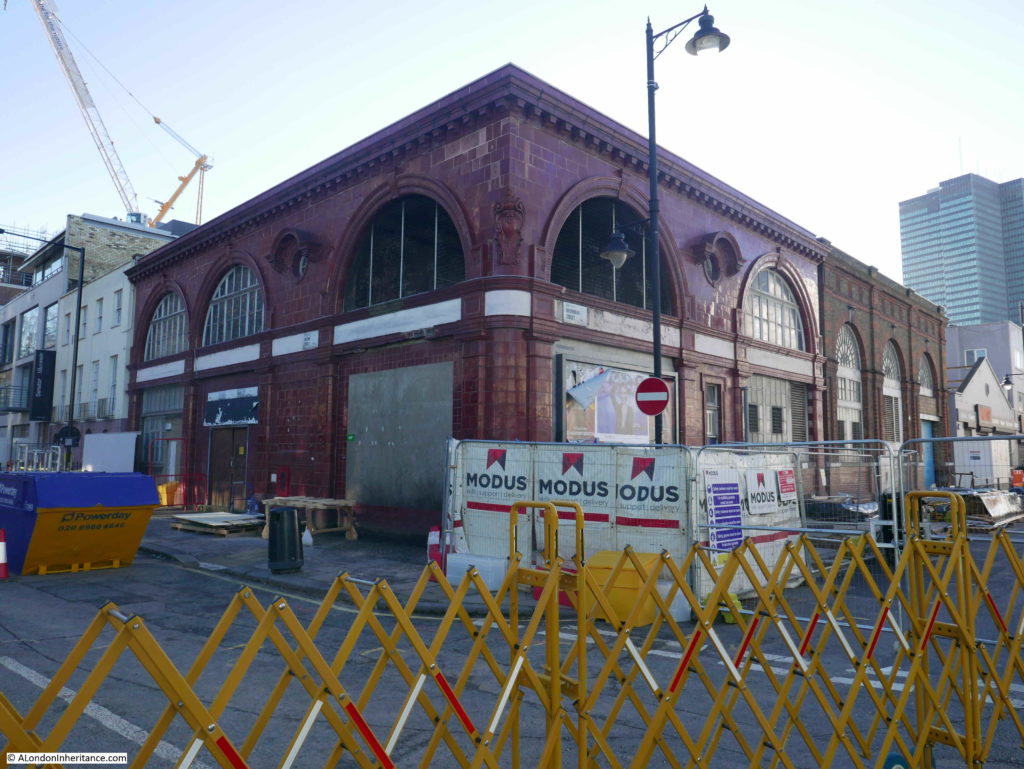



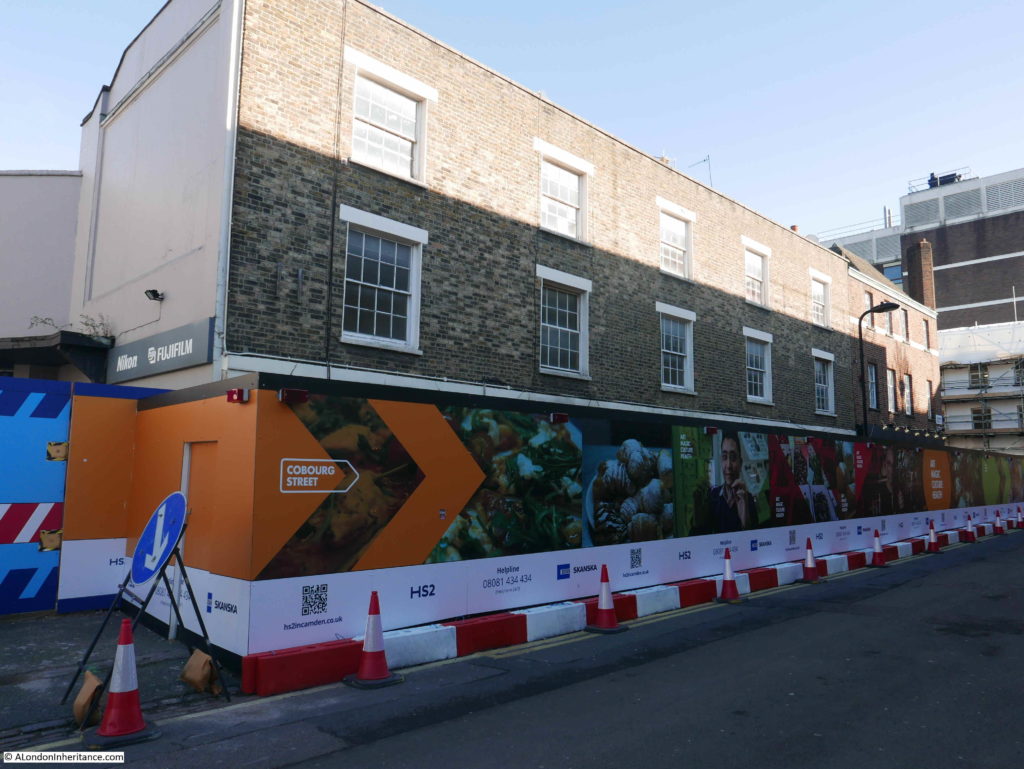

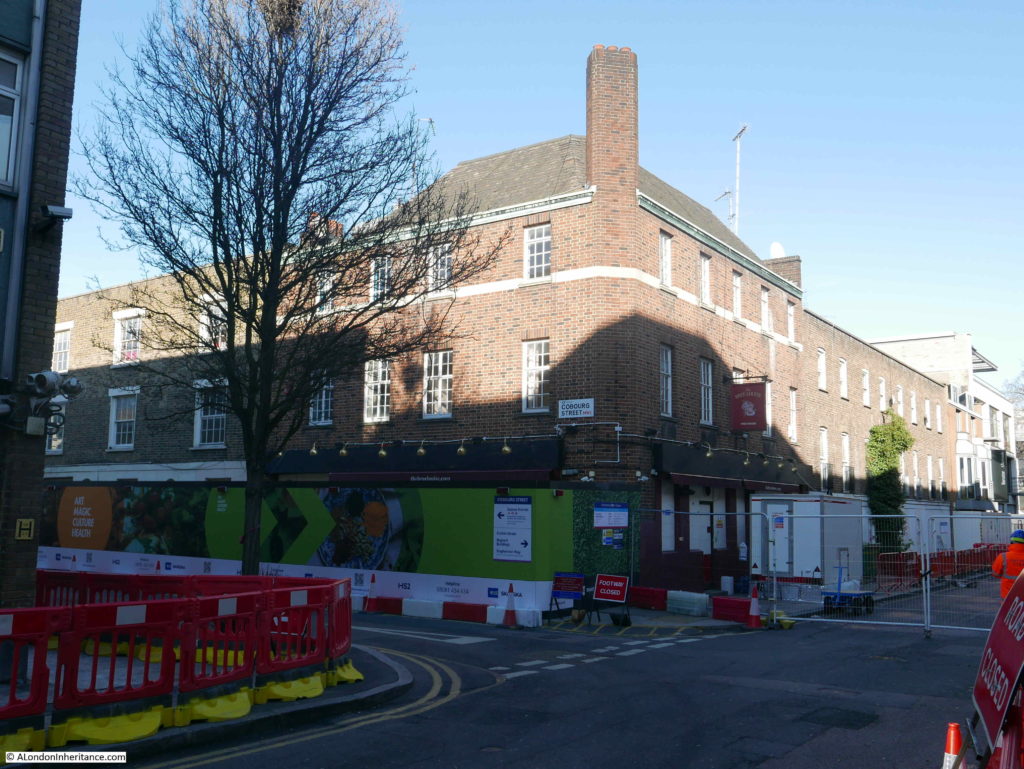
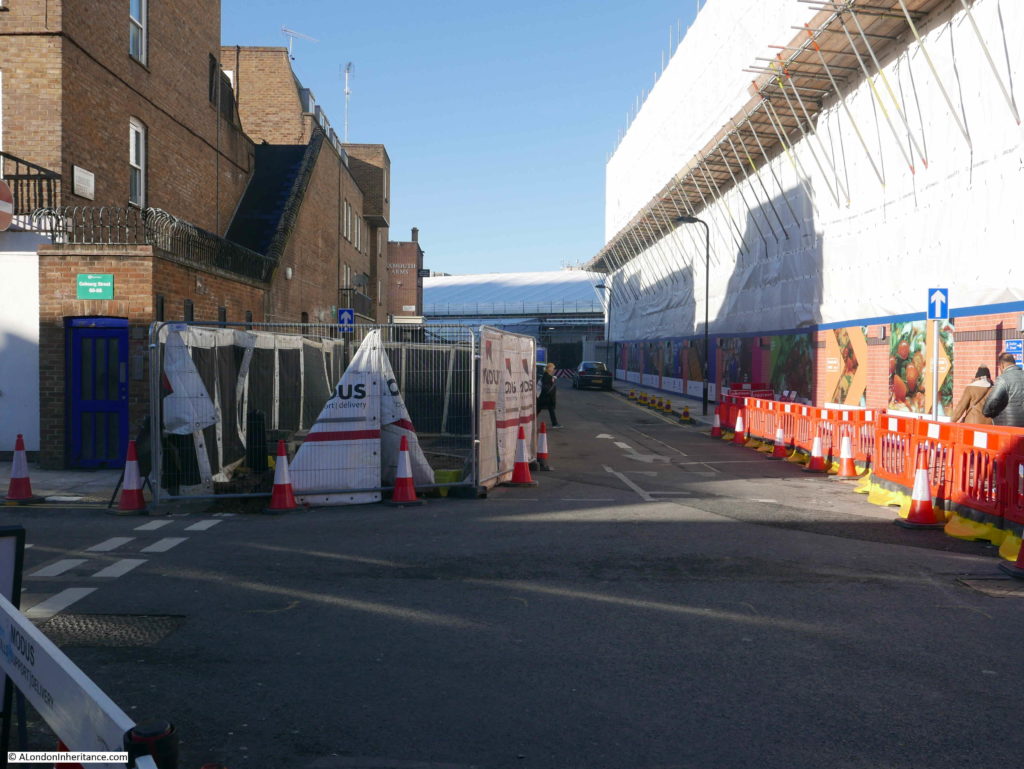


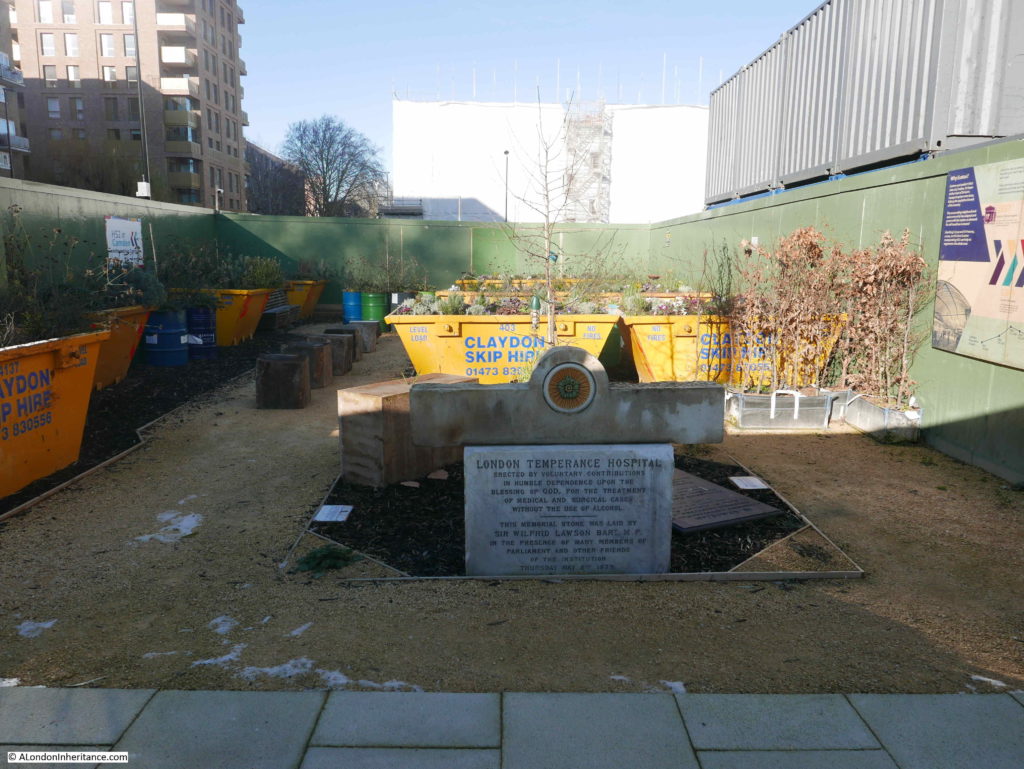
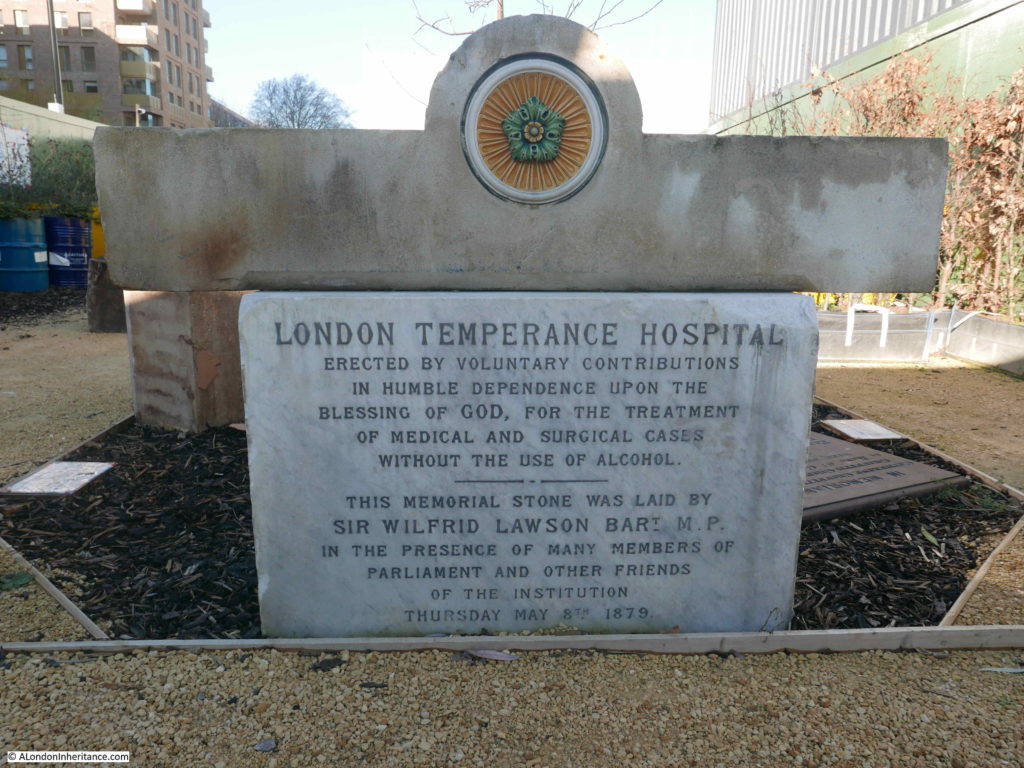
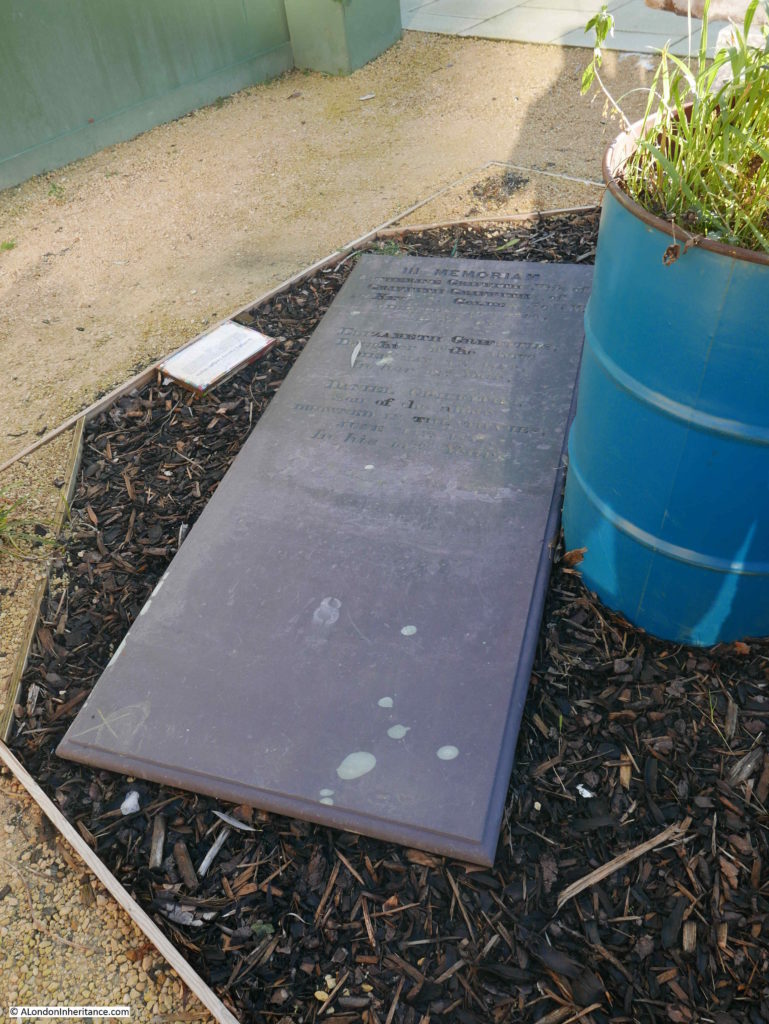


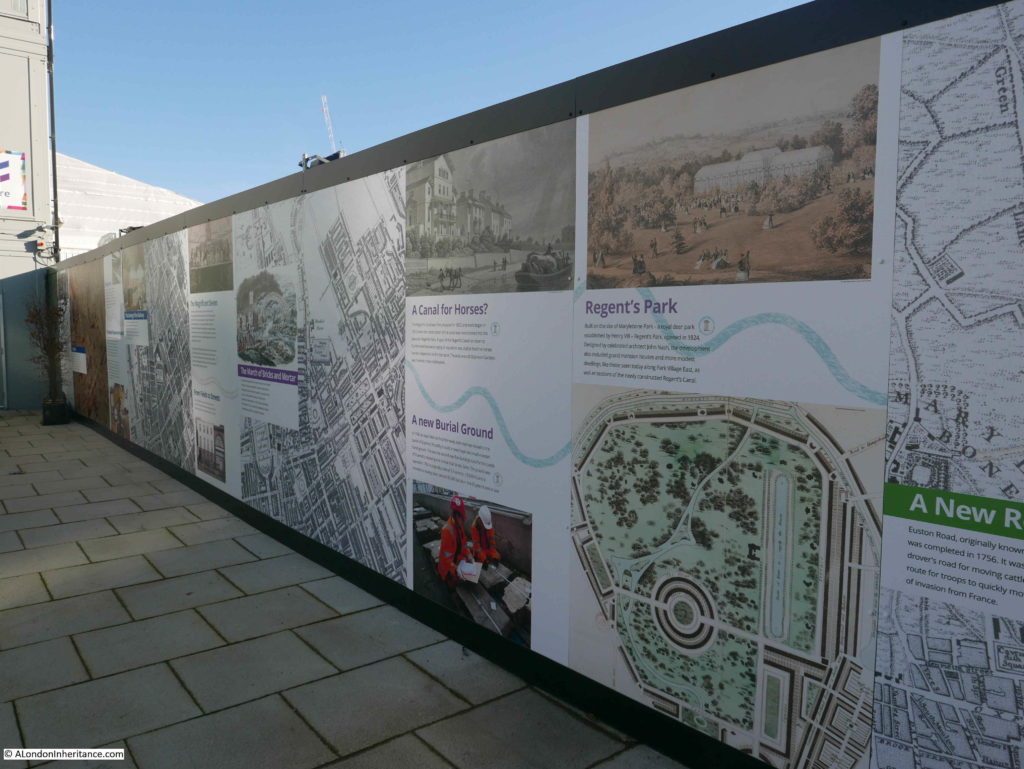

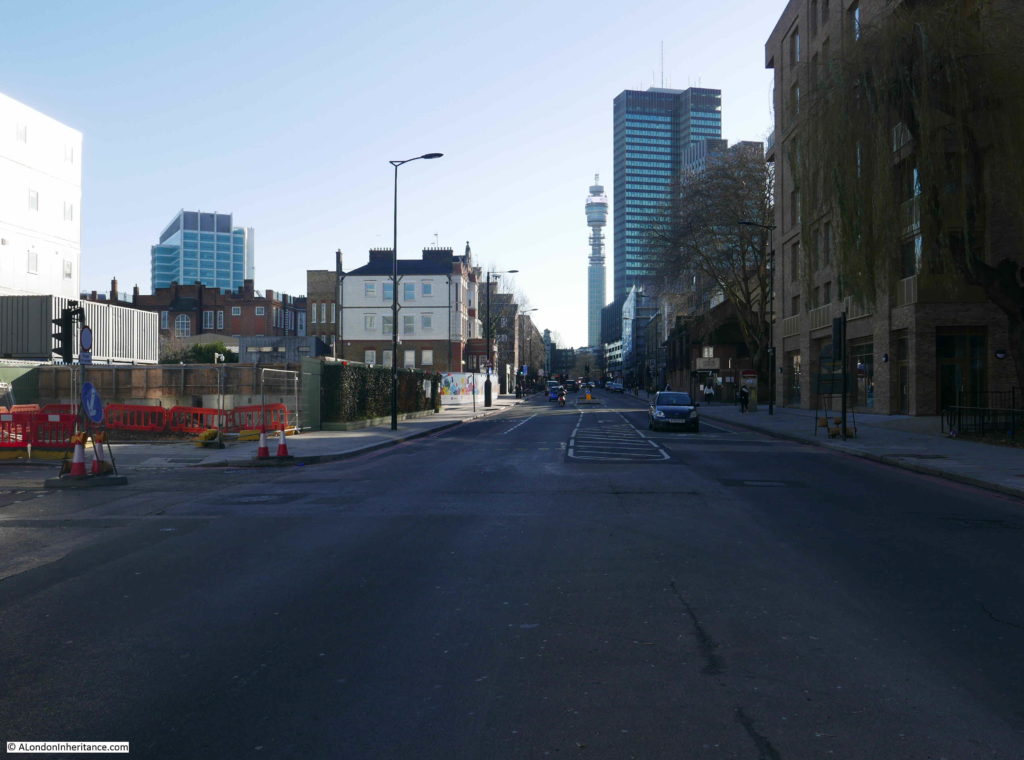
It makes me sad to see this, an area I am so familiar with and of course wondering where my Great Grandfather from St James’ has ended up (on going saga!) The old Leslie Green structure is going to become a ventilation shaft (with plants growing on it) apparently. I only found this out when I visited the Royal College of General Practitioners building (30 Euston Sq.) I worked in that building for many years and had it Grade 2 * listed so it will remain there despite HS2 – thank heavens. It’s an amazing building designed by Arthur Beresford Pite (my page about him and the building is https://www.facebook.com/Arthurberesfordpite.
I wonder what’s in the Temperance Hospital time capsule? I hope we find out.
All very interesting! I was actually baptised in St James’ and attended there with my parents until it was closed. The area has changed so much since I was last anywhere near it that I had great difficulty, even with the help of Google Street View, orientating myself. However, Old St Pancras church, which I also knew well, was affected by the building of St Pancras station, not Euston, as the maps show.
I worked in the Euston Road in the 1950s at the head office if the National Rail Union next to The Welcome Foundation and across the road from Euston Square Station so its all very interesting to me
thank you for all the info
Joyce
It is sobering to note that 214 Dwellings including one above the named Bree Louise Pub, shall all be demolished, plus a further 136 social housing dwellings on the Regent’s Park Estate and in Coburg Street, although it is likely these shall be rehoused, further up the track. However this represents loss of 450 residences , that’s over a 1000 residents, a complete break up of the local community will therefore take place. Apparently, London Zoo (ZSL), shall lose its existing parking, to be used as a Lorry loading area throughout the construction period.
The high speed station will be constructed in two stages, the first to allow operation of HS2 Phase One services to commence in 2026 and the second to provide additional platforms to allow for growth in services and to allow HS2 Phase Two services to commence in 2033. Six high speed platforms will be provided by 2026 and 11 by 2033. The first stage of the high speed station will be able to operate effectively, while the second stage is built. On completion in 2033, there will be 11 high speed platforms and a minimum of 11 conventional platforms reduced from the present 16.
Congratulations on your anniversary. I have only recently discovered your posts and love them all, especially where I have discover a personal connection as in Melton Street (and previously the Lion Brewery on the South Bank.) My gt.grandfather and several other family members lived there, many with butchers, bakers or other shops in that area, having moved from Devon in the mid nineteenth century. Hope you include Kentish Town, St. Pancras etc.in future posts. Many thanks, much appreciated.
Thanks for these. I used to walk along Carrington Street every morning on my way to work and can’t believe how much it has changed. I was always fascinated by the National Temperance Hospital, which looked very creepy when the area was deserted.
Another load of destruction in the name of progress to shave a few minutes travelling time.
This may be of interest to anyone with relatives buried in St James’. I sent for a copy today.
London Westminster & Middlesex Family History Society.
Introducing the third in our series of Monumental Inscription, based on recordings of gravestones taken in the 1980s by members of our founder-societies. This book contains 625 headstone from the St James Hampstead Road Burial Ground, which is currently being removed for the expansion of Euston station required for the HS2 rail link. The graveyard first lost some of its ground to railway development in 1883, when the London and North Western Railway were granted an acre of the north-east corner. This booklet costs £6 and can be purchased online from our GenFair stall: https://www.genfair.co.uk/search.php?category&product_county&Submit=Search&search=monumental+inscriptions&county&sid=391&order=score
Captain Matthew Flinders RN 1774 -1814 mentioned above will be reburied inside St. Mary &The Holy Rood, Donington, Lincolnshire, on the 17th of July 2020. Donington being his place of birth. The statue of him and his cat trim will remain at Euston Station.